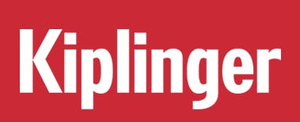
By Lisa Gerstner
Feb. 15, 2023
In a video from TikTok account “AbundantGains,” a woman separates cash from her paycheck into clear plastic envelopes with labels: $40 for Black Friday shopping, $50 toward getting a tattoo, $355 to save for a future home purchase, $215 for a vacation. There’s something satisfying and soothing about watching her neatly tuck away the bills.
With more than 11 million views, the video resonates — and it’s one of many on TikTok about “cash stuffing,” a budgeting method that relies on dividing physical cash into spending and saving categories.


iStock image
While millennials and Generation Z have made cash stuffing a viral trend on social media, it’s hardly a new concept. Budgeters have long used the strategy — also known as the envelope method — to set hard limits on their spending.
It has staying power because it works. “Watching your paper money disappear before your very eyes has a much greater mental impact versus swiping a credit or debit card,” says Rockie Zeigler, a certified financial planner in Peoria, Illinois. “It can greatly increase your chances of keeping on a budget.”
If you struggle to keep your spending in check or are working on a savings or debt payoff goal, cash stuffing is one way to get on track.
And if you view it as a game, it can even be fun, says Curtis Crossland, a CFP in Scottsdale, Arizona, who has used the method himself.
For example, if you have money left over in an envelope for a spending category at the end of a budgeting period, you get to decide whether to leave it there for the next period or move it elsewhere.
“Purposely underspending in a category meant I could plan on something that wasn’t previously in the budget, and I started looking forward to ‘earning’ that thing,” Crossland says.
But cash stuffing has its share of drawbacks. Paying with cash isn’t always feasible or practical — you may not be able to pay your wireless or utility bills with cash, for example. If your cash is lost or stolen, you likely won’t get it back. (You can replace a lost credit or debit card, and you have legal protections that limit your liability for stolen funds.)
This content was legally licensed byAdvisorStream.








